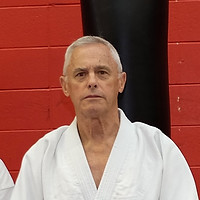
ABOUT US
Aikido has evolved essentially from three Japanese martial arts; Daito-ryu Aikijujutsu, a system of
unarmed self-defense; Iaido or iaijutsu, the study of the sword; and Jodo or jojutsu, the study of the short staff. The martial art that made the largest contribution to Aikido was Daito-ryu Aikjujutsu. Its master, and possible founder, was Sokaku Takeda (1859-1943). Our knowledge of this martial art and its founder has been slow to evolve. There are numerous schools and practitioners, but there is still a secrecy surrounding its history and techniques. One of Takeda’s most talented and long-time students was Morihei Uyeshiba (1883-1969), who studied with him for more than 20 years. Takeda granted Uyeshiba the “kyoju dairi” certification allowing him to teach Daito-ryu Aikijujutsu at the highest levels. In fact, Uyeshiba was looked upon as Takeda’s successor.
Over time, Uyeshiba modified Aikijujutsu by integrating the zen-like and humanistic qualities of his religious studies, calling his new version “Aikido”. Aikido became extremely popular in the 1960s and 70s attracting a large international following. There was at this time little knowledge of the founding martial art. Aikido and Uyeshiba were becoming so popular worldwide that there was little interest in exploring the roots of this “new” martial art. There is hardly a technique in Aikido that does not bear a resemblance to a Aikijujutsu counterpart. Aikido and Ueyshiba’s popularity eventually far surpassed the founding martial art and its master with little interest in exploring the relationship between the two.Three main systems evolved: Aikikai, which carries on the traditions and teachings of Uyeshiba; Ki Aikido (or Shin Shin Toitsu Aikido), established by Koichi Tohei (1920-2011), a student of Ueyshiba, which emphasizes the importance of ki in Aikido; and, Yoshinkan Aikido, developed by fellow Uyeshiba student and licensed Daito-ryu Aikijujutsu teacher, Gozo Shioda (1915 - 1994). All three systems have common characteristics:
The capture and exploitation of your opponent’s attacking power to subdue them into submission;
The use of circular movements and centrifugal force to augment one’s core power or ki in the application of a technique;
The effective projection of one’s core power through a relaxed body.
Aikido Yoshinkai Edmonton focuses on Yoshinkan Aikido, and we encourage you to consider its origins during your study.